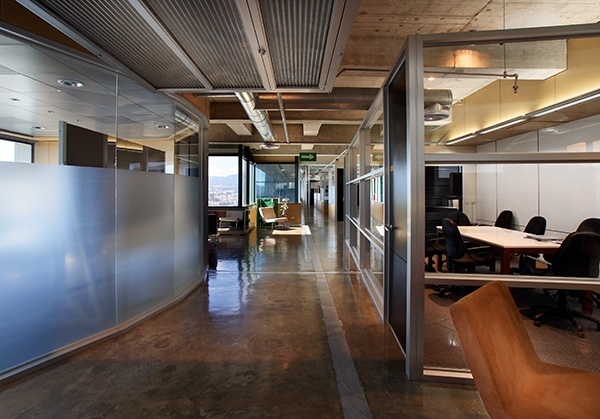For many companies, downsizing your office space can be an excellent way to control costs. At the same time, strategic downsizing can also help you improve productivity and employee retention while building culture. The idea isn't only to get a smaller office -- it's to get the right-sized office with the right energy and right space for your team.
1. Know Why You're Downsizing
The first step is to figure out what your goal is in downsizing your office space. Cost savings are probably part of your concern, but if you're looking to more efficiently distribute your teams or eliminate culture- and energy-killing wasted space, you might end up spending more money when you end up reconfiguring existing space.

At the same time, you might also find it worthwhile to look into a completely new space instead of simply downsizing what you already have.
2. Plan for Safety
While densifying your employees is tempting from a cost perspective, you will also need to make sure that your space's configuration meets both regulatory and perceived demands for safety. Even if you're planning to downsize post-COVID, your workers will probably be more sensitive to social distancing and to sanitary surfaces than they were before the outbreak. This means that your ability to downsize by creating narrow corridors and tightly packed open workspaces is going to be limited.
3. Define Employee Needs... And Employees Needed
One of the biggest mistakes of the open-plan office movement that dominated much of the first couple of decades of the 21st Century is the creation of offices that theoretically supported collaboration, and nothing else. As you plan your downsizing, take some time to understand what each of your employees do and how those tasks interact with their workspace. Then you can make sure that your downsized office has the exact right space for them to achieve maximum productivity.

At the same time, do a careful survey of how many employees you need to have in the office. Notice that we didn't say "how many employees you need" here. This is because post-COVID, it's likely that some of your remote workers will remain remote either full- or part-time. This means that rather than needing desks for 100 percent of your employees, you might only need desks for 70, 50, 30 or fewer percent. This lets you downsize your office more aggressively even if you're planning to maintain (or grow!) your team.
4. Repurpose Common Areas
The tradeoff in open offices usually took the form of giving up a personal workspace for an office filled with lavish common collaboration spaces.

If people don't want to spend time breathing on each other, though, many of those spaces can be carved up and turned into smaller collaboration rooms or private offices, achieving net savings in total office square footage.
5. Rethink Workspaces
Creating private, socially distanced workspaces for your employees doesn't mean that you can't downsize. One key to shrinking your office and giving your people the right space is to reconsider the size of offices and cubicles. Why are your private offices X by Y square feet? How much space does someone really need? Do they need a printer? A file cabinet? A desk phone? Who needs a deep desk when flat-panel monitors are only an inch or two thick? Modern working styles and office equipment are much more space-efficient than the way we did things in the 20th Century.
6. Create Space for Privacy
Finally, however you downsize your office, realize that when you put people together in less space, their basic human needs don't change. Everyone needs to concentrate on occasion. People place calls they don't want overheard. And, sometimes, it's nice to duck out of the hubbub.

Creating private spaces like pods, phone booths, zoom rooms, and private offices makes sure that everyone gets a chance to get away and stay productive, happy, and healthy.
Here are a few other articles we think you'll enjoy:
The 3 R's of CRE - Part 1: Right-Size
The 3 R's of CRE - Part 2: Renegotiate
5 Reasons Why Companies Are Fleeing CA and NY for FL and TX
Subscribe to our blog for more CRE tips!!







